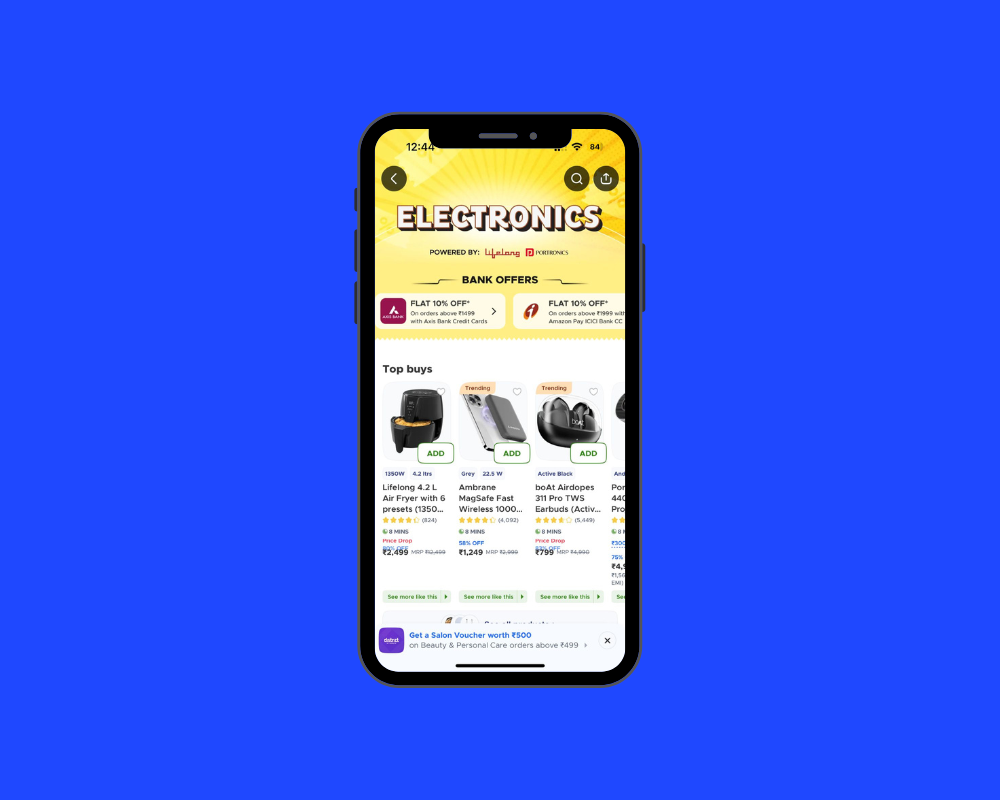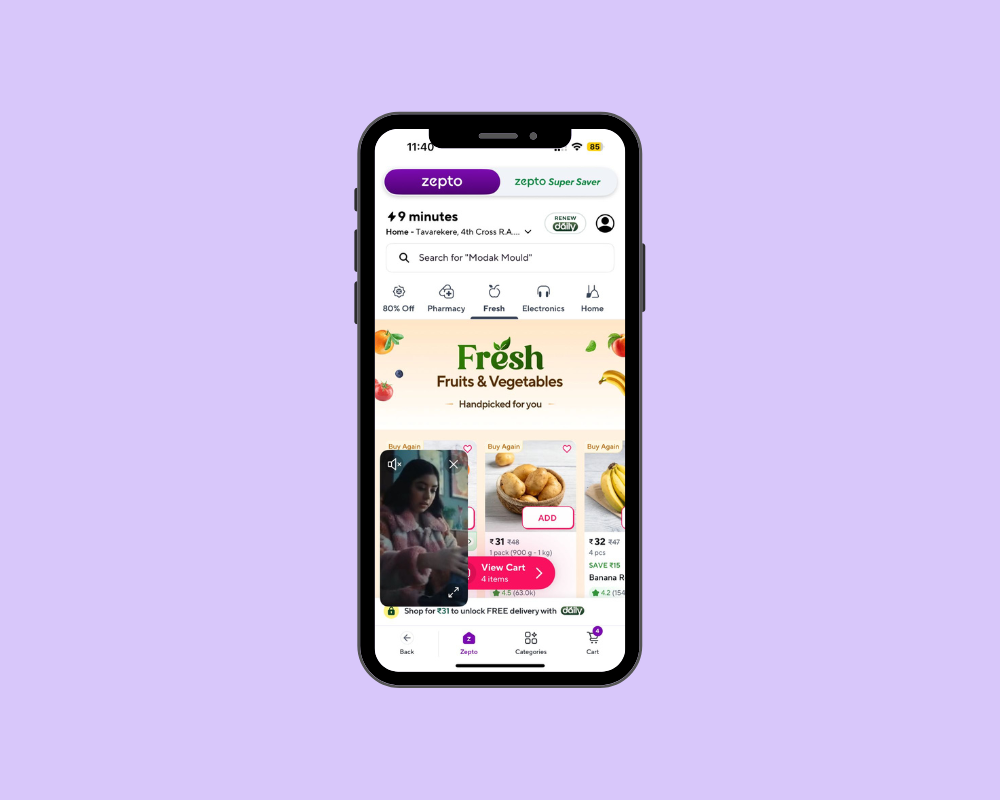Most brands assume retention is a post-purchase problem, solvable through loyalty workflows, CRM triggers, or repeat incentives. But in quick commerce, that assumption breaks. Platforms like Blinkit and Zepto compress decision-making into 15–30 second sessions, where a majority of conversions happen on the first few scrolls. If your SKU isn’t among them, it’s not just skipped, it’s never cognitively processed.
This early-stage invisibility doesn’t just dent conversions. It severs your product from the consumer’s memory loop. No impression means no mental encoding. And no encoding means every CRM nudge later is chasing a user who was never aware of your product to begin with.
In Q-commerce, retention begins when you show up often enough to be remembered. Shelf visibility isn’t just for acquisition, it’s your first and most important retention lever. Let’s unpack why shelf visibility is no longer just a top-of-funnel concern and how brands can build discovery as a measurable, repeatable lever for habit and retention.
1. You Can’t Drive Retention Without Shelf Presence
In traditional e-commerce, discovery happens through ads and SEO, and retention happens post-purchase. In Q-commerce, both happen on the app shelf. Your product tile is your discovery tool and your repeat purchase trigger.
You don’t build retention just through discounts, you build it by showing up where your customer shops, again and again, especially when their demand is highest. But what brands often ignore is this: tile placement isn’t fixed, it’s earned, based on SKU performance signals like:
- Add-to-cart rate (ATC%)
- Conversion velocity in a pincode cluster
- Stock reliability at high-throughput dark stores
- Category-level CTR deltas (how your SKU performs vs. other items in the same keyword)
A great example of this in action is Akshayakalpa Organic Milk. Whether you search on Blinkit or Zepto, Akshayakalpa consistently shows up at the very top for “organic milk”. They’ve built this dominance not through heavy discounts, but through reliable in-stock availability, strong performance metrics, and smart keyword indexing. By being constantly visible across platforms, without relying on paid boosts, they don’t just win first-time conversions, they build repeat purchase habits. The brand becomes a natural default, simply because it’s always there when the customer is ready to buy. In Q-commerce, this is what real retention looks like: being visible enough, often enough, to become the default choice.
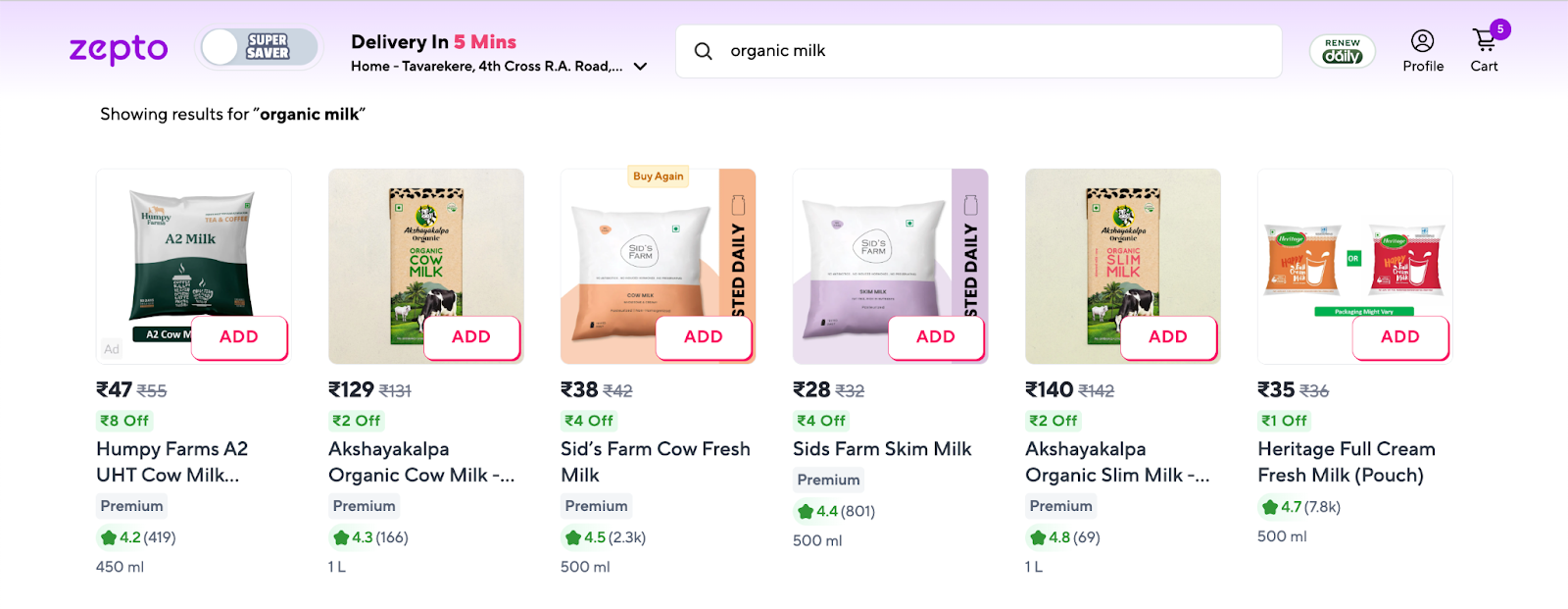
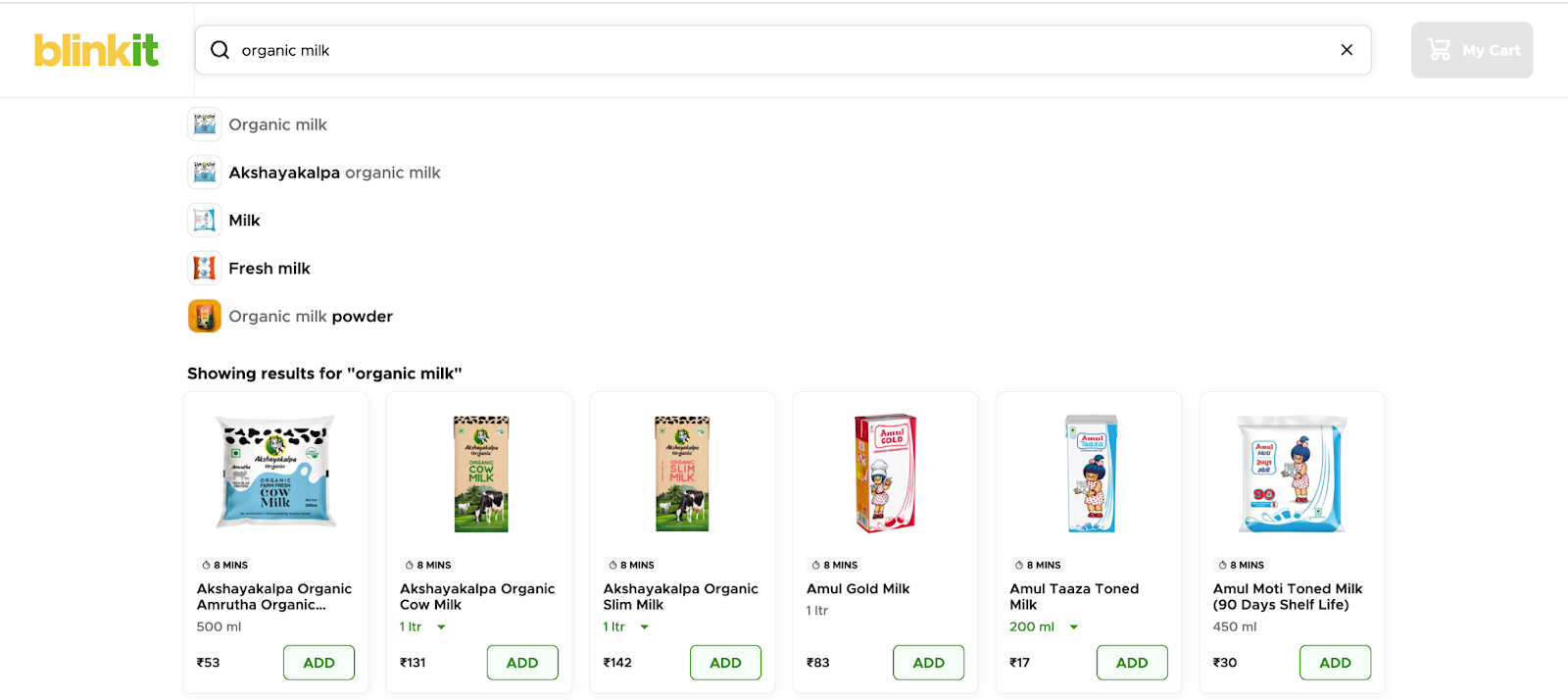
Before asking “Why aren’t people reordering?”,
Start with “Did we even show up enough times to be remembered when their category demand peaked?”
2. Visibility Metrics Are Your True Retention KPIs
Many brands fixate on downstream KPIs like CTR, conversion %, or repeat rate. But in Q-commerce, those metrics are the result of visibility, not the cause.
Habit formation starts with shelf presence. The more frequently a user sees your product, especially at the right time and place, the more it builds memory, preference, and repeat behavior.
What you should be measuring instead:
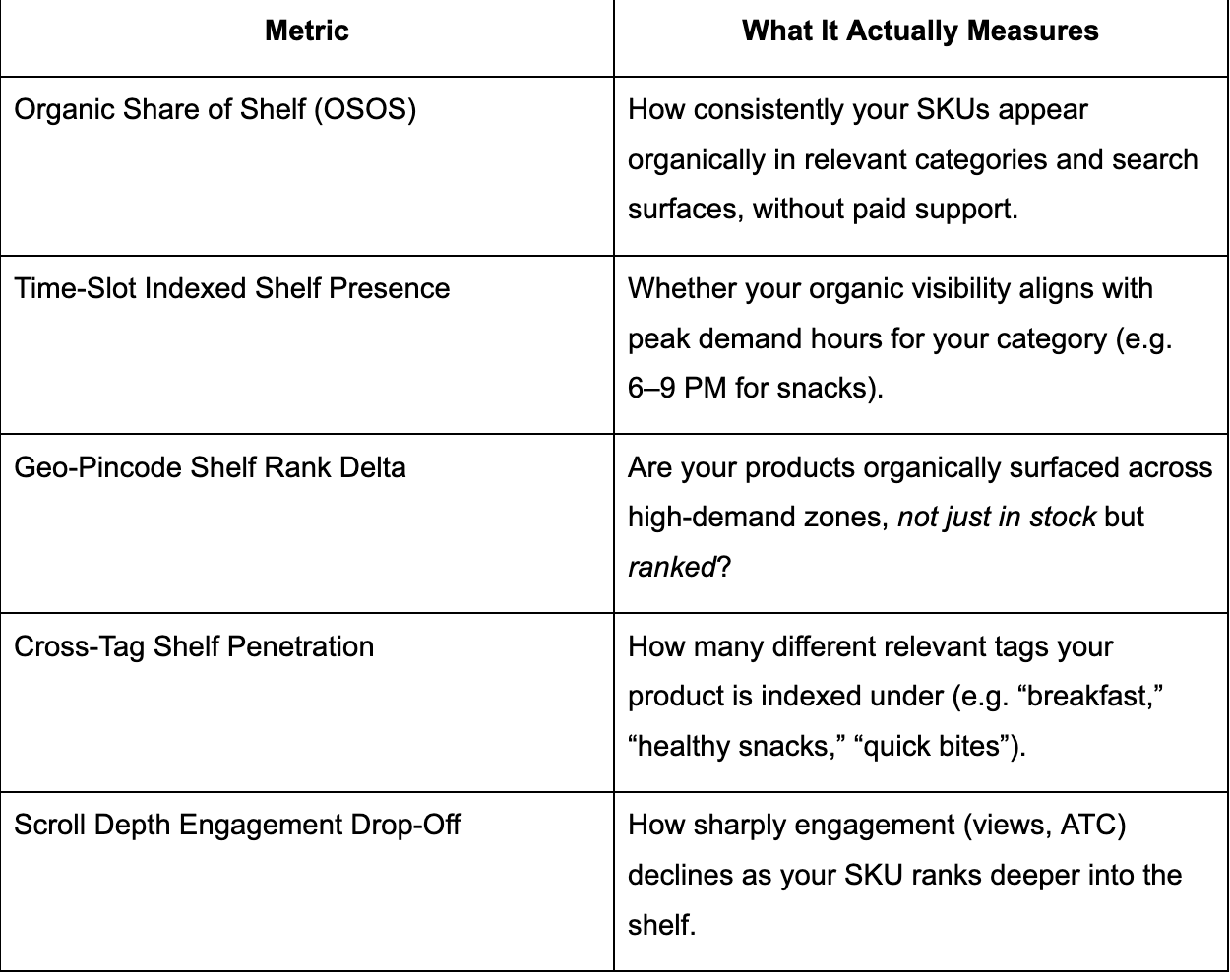
Think of OSOS like organic reach in media, it builds free mindshare, which compounds into repeat behavior.
3. Keywords Drive Both Discovery and Habit Formation
In paid media, targeting defines who sees your product. In Q-commerce, keywords do the same. Keywords determine where you surface, and more importantly, in what context. They need to be:
- Intent-driven
- Context-aware
- Diversified across consumption use cases
Good tagging is not about hygiene, it’s about dominating the right intent clusters and consumption moments. For example:
- Muesli shouldn’t just appear under breakfast, but also high-protein, healthy snacks, and diabetic-friendly.
- A cold brew should surface under coffee, energy drinks, and pre-workout.
In Q-commerce, your first retention lever isn’t CRM, it’s repeated discovery. Fix shelf visibility, and you’ll not only win the first order but unlock natural, organic retention loops that no paid incentive can replicate.




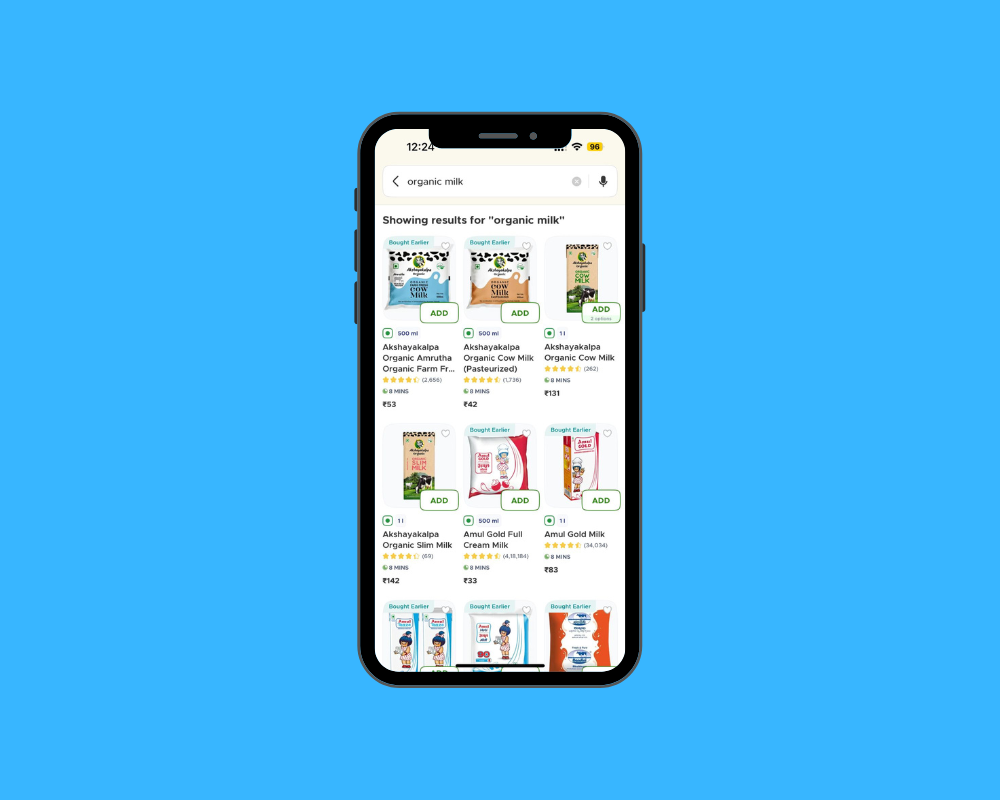
.png)
